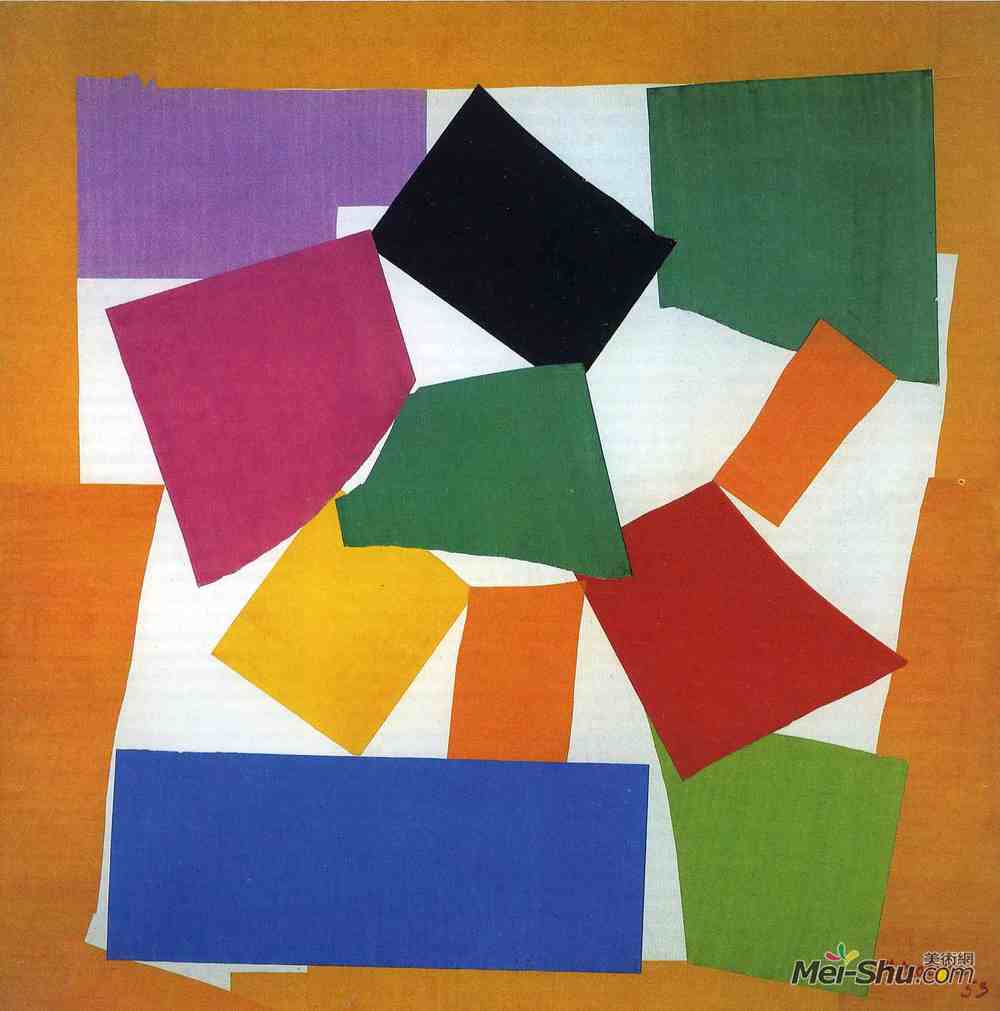 亨利·马蒂斯(Henri Matisse)高清作品《蜗牛》
亨利·马蒂斯(Henri Matisse)高清作品《蜗牛》
作品名:蜗牛
原名:L·埃斯卡戈
艺术家:亨利·马蒂斯
年代:1953
风格:抽象主义,色域绘画
类型:抽象
介质:水粉,纸
尺寸:286 x 287 cm
收藏:泰特现代,伦敦,英国
蜗牛(LeSeCcGod)是亨利·马蒂斯的拼贴。这项工作是从1952夏天到1953年初创建的。它用水粉在纸上着色,切割并粘贴在9'43_4"×9'5"(287×288cm)的白纸底层上。这张作品在伦敦的泰特美术馆收藏。它由许多按螺旋图案排列的彩色形状组成,如标题所示。马蒂斯先画了蜗牛,然后用彩色纸来解释。作品配对互补色:马蒂斯给作品取名为《拉组成色度》(色度组成)。从20世纪40年代中期到中期,马蒂斯的健康状况越来越差,并患有关节炎。到了1950岁,他停止了绘画,而喜欢画画。蜗牛是这个作品最后的一个主要例子。色彩领域画家和极简派画家如埃尔斯沃斯·凯利、阿尔玛·托马斯或肯尼斯·诺兰德,在以后的作品中以多种方式延续了马蒂斯对色彩的还原,其中《蜗牛》被认为是最接近当代抽象艺术的作品。
Title:The Snail
Original Title:L'escargot
artist:Henri Matisse
Date:1953
Style:Abstract Art,Color Field Painting
Genre:abstract
Media:gouache,paper
Dimensions:286 x 287 cm
Location:Tate Modern, London, UK
The Snail (L'escargot) is a collage by Henri Matisse. The work was created from summer 1952 to early 1953. It is pigmented with gouache on paper, cut and pasted onto a base layer of white paper measuring 9'43?4" × 9' 5" (287 × 288 cm). The piece is in the Tate Gallery collection in London. It consists of a number of colored shapes arranged in a spiral pattern, as suggested by the title. Matisse first drew the snail, then used the colored paper to interpret it. The composition pairs complementary colors: Matisse gave the work the alternative title La Composition Chromatique (chromatic composition). From the early-to-mid-1940s Matisse was in increasingly poor health, and was suffering from arthritis. Eventually by 1950 he stopped painting in favor of gouaches découpées, paper cutouts. The Snail is a major example of this final body of works. Color field painters and minimalists such as Ellsworth Kelly, Alma Thomas or Kenneth Noland have continued in many ways the reduction to color done by Matisse in later works, among which The Snail can be considered the closest to contemporary abstract art.
作品名称:《蜗牛》亨利·马蒂斯(Henri Matisse)高清作品欣赏
作品链接:https://www.mei-shu.com/famous/27509/artistic-126201.html
作品类别:油画
免责声明:本站部分公开资料来源于互联网,目的是用于学术交流与讨论,并不代表本网赞同其观点和对其真实性负责。如果您认为我们的侵犯了您的权益,请与我们联系(banquan#mei-shu.com #替换为@),我们将在第一时间删除相关内容。